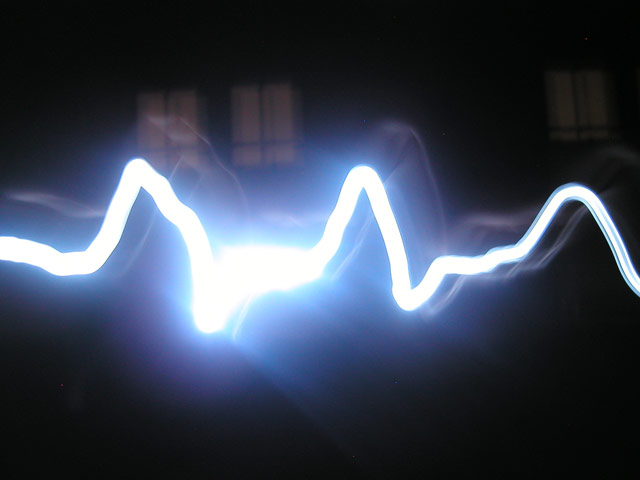Dreadful Experiment Yields Shocking Results

Gregory Berns and his fellow researchers recently coaxed 32 willing volunteers to slide their heads into an MRI scanner and receive a series of electrical shocks to their left feet.
Before each shock, a participant was told how painful it would be—as a percent of his or her maximal pain threshold—and how long the wait would be for the jolt.
The most painful shocks felt like a sharp needle jab, said Berns, a neuroscientist at Emory University who was trying to understand the brain mechanisms behind dread.
Give it to me now!
After a round of 96 zaps, each person was given the option of changing the delivery regimen, opting to receive the shocks sooner or later in a second round. Although neither option ushered the participant through the experiment any quicker, most dreaded waiting for the events more than they minded the actual pain, so they chose to speed up the delivery.
Participants were also asked if they would prefer receiving a stinging electric shock now, or a less painful one a little later.
For "extreme dreaders," the anticipation of the shock was too much to bear. Instead of waiting 27 seconds for a shock at 60 percent of their pain threshold, this group opted to get it over with and chose a 90 percent threshold shock for which the wait was only 3 seconds.
Get the world’s most fascinating discoveries delivered straight to your inbox.
Science or torture?
Although it sounds more like torture than science, the results helped the researchers track down the roots of dread to isolated regions of the brain and suggest a simple solution for easing the uneasy.
The MRI scans revealed increased activity in localized regions of the participants' brains associated with pain, with extreme dreaders showing more intense activity, especially during the early stages leading up to the event.
Common sense might suggest that the best way to avoid a painful experience is to, well, avoid it or put it off for as long as possible. But waiting for a painful procedure, such as a necessary surgery, can be bad for you.
"For some people, waiting for the shock is worse than the pain itself, so they chose to get it over with quickly," Berns told LiveScience. "But for others, it's worth it to avoid the experience altogether, which may not be good for their health."
Hey, look over there!
Activity also flared in parts of the pain network linked to attention, but not in regions associated with fear and anxiety, suggesting dread is not a simple combination of the two emotions. This only makes things worse for the extreme dreaders.
"The more you pay attention to something that hurts, the more it hurts," Berns said.
Whether you dread the dentist's chair or something less painful, such as public speaking, taking your mind off the matter—by watching a movie, playing a game, or picturing the audience in the nude—might be the best way to overload your attention so you no longer dread the pain.
"The benefits could be substantial if it means that we act more rationally in terms of getting healthcare, or simply decreasing the psychological toll of dread and anxiety," Berns said.
The research is reported in the May 5 issue of the journal Science.


